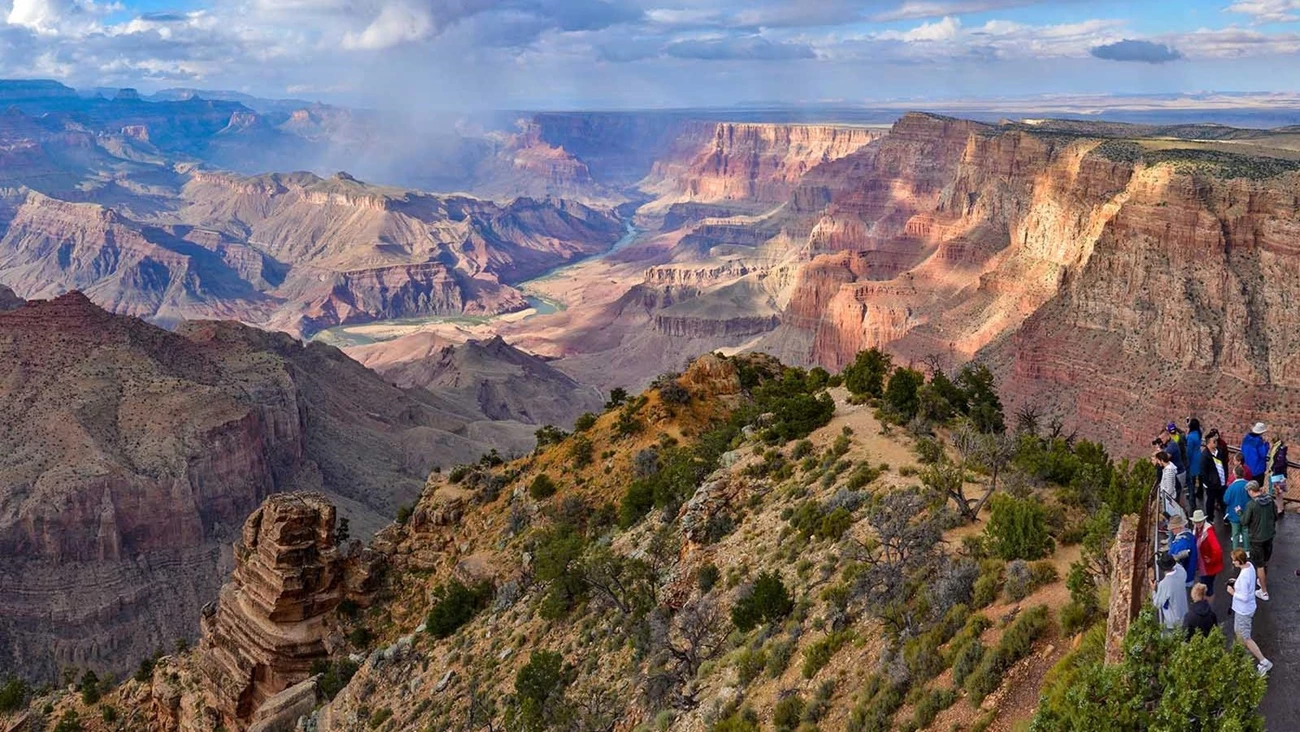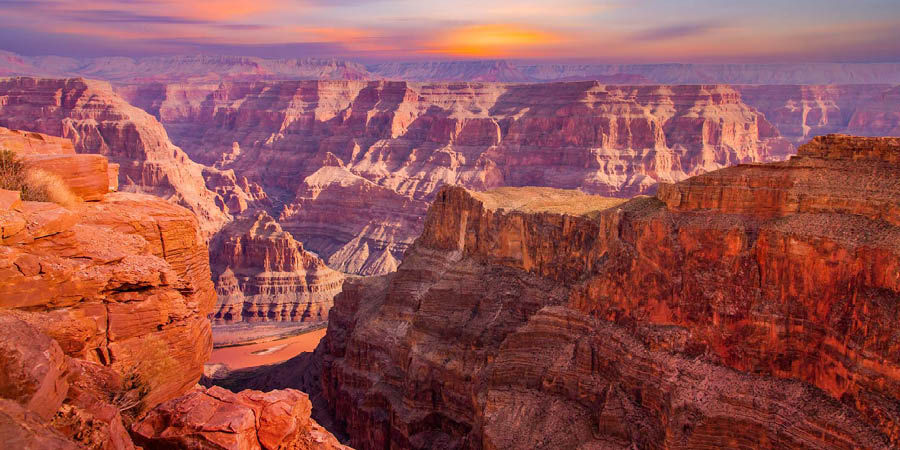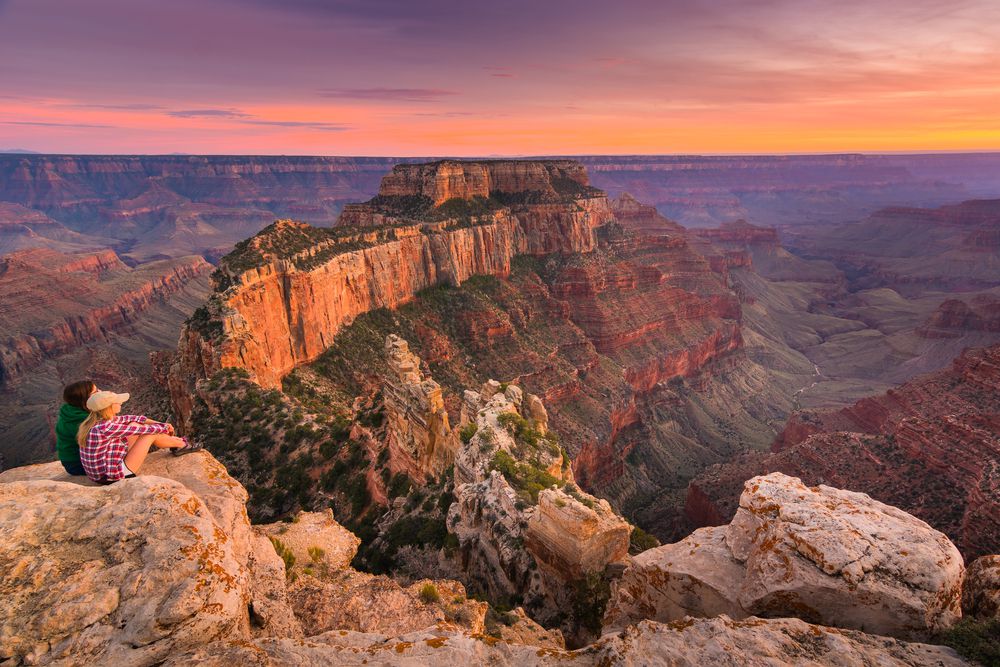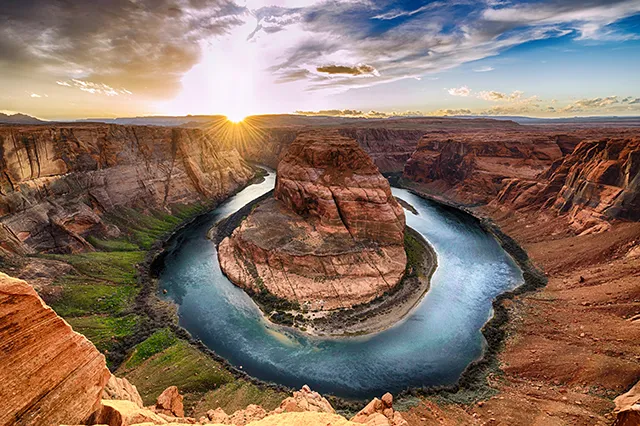Introduction
Grand Canyon National Park, located in northern Arizona, is one of the most famous natural landmarks in the world and a UNESCO World Heritage Site. Known for its immense size, layered rock formations, and breathtaking views, the Grand Canyon attracts nearly 6 million visitors each year. Stretching 277 miles in length, up to 18 miles in width, and over a mile deep, this natural wonder offers endless opportunities for sightseeing, hiking, camping, and adventure.
Geography and Geology of the Grand Canyon
The Grand Canyon is carved by the Colorado River over millions of years. Its dramatic cliffs reveal rock layers that are over two billion years old, offering a glimpse into Earth’s geological history.
-
Length: 277 miles (446 km)
-
Width: 4–18 miles (6–29 km)
-
Depth: Over 6,000 feet (1,800 meters)
The canyon is divided into three main sections:
-
South Rim: The most visited area, open year-round with iconic viewpoints.
-
North Rim: Higher in elevation, cooler, and less crowded, open seasonally from May to October.
-
Inner Canyon: Includes trails and rafting routes along the Colorado River.
History of Grand Canyon National Park
The Grand Canyon has been home to Native American tribes for thousands of years, including the Havasupai, Hopi, Navajo, and Hualapai. Spanish explorers first documented the canyon in the 1540s. Later, American pioneers and scientists explored its depths.
In 1919, the Grand Canyon was officially designated a National Park, helping to preserve its unique landscapes and cultural heritage. Today, it stands as a symbol of natural beauty and geological importance.
 Top Attractions in Grand Canyon National Park
Top Attractions in Grand Canyon National Park
1. South Rim Viewpoints
-
Mather Point – A popular first stop with panoramic views.
-
Yavapai Point – Offers one of the best views of the Colorado River.
-
Desert View Watchtower – Features a 70-foot stone tower with Native American-inspired art.
2. North Rim
Known for fewer crowds and cooler weather, the North Rim features stunning views like Bright Angel Point and scenic drives along Cape Royal Road.
3. Bright Angel Trail
One of the most famous hiking trails in the park, leading from the South Rim into the canyon.
4. Havasu Falls
A turquoise waterfall located on Havasupai tribal lands, famous for its beauty and photography opportunities.
5. Colorado River Rafting
A thrilling adventure for those wanting to experience the canyon from below.
6. Grand Canyon Skywalk
A glass bridge extending 70 feet over the canyon rim in the West Rim, providing breathtaking views straight down.
 Activities in Grand Canyon National Park
Activities in Grand Canyon National Park
-
Hiking: Trails like Bright Angel, South Kaibab, and Rim Trail range from easy walks to challenging descents.
-
Camping: Available at both rims, with backcountry permits for overnight hikes.
-
Rafting: Multi-day rafting trips on the Colorado River offer an unforgettable adventure.
-
Mule Rides: A historic and unique way to explore the canyon.
-
Helicopter Tours: For an aerial perspective of the vast landscape.
-
Stargazing: The park is recognized as an International Dark Sky Park.
Best Time to Visit the Grand Canyon
-
Spring (March–May): Mild temperatures and blooming wildflowers.
-
Summer (June–August): Peak tourist season with warmer weather.
-
Fall (September–November): Cooler weather and fewer crowds.
-
Winter (December–February): Snowy landscapes on the rims and fewer visitors.
The South Rim is open all year, while the North Rim closes during winter due to heavy snow.
How to Reach Grand Canyon National Park
-
By Car: The South Rim is about 230 miles from Phoenix, Arizona, and 275 miles from Las Vegas, Nevada.
-
By Air: The nearest airports are Flagstaff Pulliam Airport (FLG) and Grand Canyon National Park Airport (GCN).
-
By Train: The Grand Canyon Railway runs from Williams, Arizona, to the South Rim.
-
By Bus/Tour: Many tours operate from Las Vegas, Phoenix, and nearby cities.
Accommodation Options
-
Hotels and Lodges: El Tovar Hotel, Bright Angel Lodge, and Yavapai Lodge on the South Rim.
-
Camping: Mather Campground (South Rim) and North Rim Campground.
-
Nearby Towns: Tusayan, Williams, and Flagstaff offer more lodging and dining options.
Travel Tips for Visitors
-
Stay Hydrated – Bring plenty of water, especially when hiking.
-
Plan Ahead – Lodges and campgrounds fill up quickly; book months in advance.
-
Dress in Layers – Temperatures vary between the rim and the canyon floor.
-
Respect Wildlife – Keep a safe distance from animals like elk and bighorn sheep.
-
Use Shuttle Buses – Free shuttles operate at the South Rim, reducing traffic and parking stress.
-
Get Permits – Backcountry camping and river trips require permits.
Fun Facts About the Grand Canyon
-
The Grand Canyon is visible from space!
-
More than 1,500 plant species and hundreds of animal species call the park home.
-
It is deeper than the height of Mount Everest.
-
The Havasupai tribe still lives inside the canyon.



You must be logged in to post a comment.